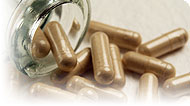health guides
Manganese

How to Use It
Whether most people would benefit from manganese supplementation remains unclear. While there is no recommended dietary allowance, the National Research Council’s “estimated safe and adequate daily dietary intake” is 2–5 mg.1 The Institute of Medicine recommends that intake of manganese from food, water and dietary supplements should not exceed the tolerable daily upper limit of 11 mg per day. In contrast, the 5–15 mg often found in high-potency multivitamin-mineral supplements is generally considered to be a reasonable level by many doctors, though many manufacturers are likely to reformulate their products to contain no more than 11 mg per daily amount.
Where to Find It
Nuts and seeds, wheat germ, wheat bran, leafy green vegetables, beetroot tops, tea, and pineapple are all good sources of manganese.
Possible Deficiencies
Many people consume less than the 2–5 mg of manganese currently considered safe and adequate. Nonetheless, clear deficiencies are rare. People with osteoporosis sometimes have low blood levels of manganese, suggestive of deficiency.2
Copyright © 2024 TraceGains, Inc. All rights reserved.
Learn more about TraceGains, the company.
The information presented by TraceGains is for informational purposes only. It is based on scientific studies (human, animal, or in vitro), clinical experience, or traditional usage as cited in each article. The results reported may not necessarily occur in all individuals. Self-treatment is not recommended for life-threatening conditions that require medical treatment under a doctor's care. For many of the conditions discussed, treatment with prescription or over the counter medication is also available. Consult your doctor, practitioner, and/or pharmacist for any health problem and before using any supplements or before making any changes in prescribed medications. Information expires December 2024.


 We are proud to announce that
We are proud to announce that  As the market evolves, customers increasingly request a wider variety of omega-3 options for their lipid...
As the market evolves, customers increasingly request a wider variety of omega-3 options for their lipid...  Maintaining healthy glucose levels is crucial for preventing metabolic conditions like diabetes,...
Maintaining healthy glucose levels is crucial for preventing metabolic conditions like diabetes,...  Looking at formulating a new vitamin blend? Discover
Looking at formulating a new vitamin blend? Discover 







































